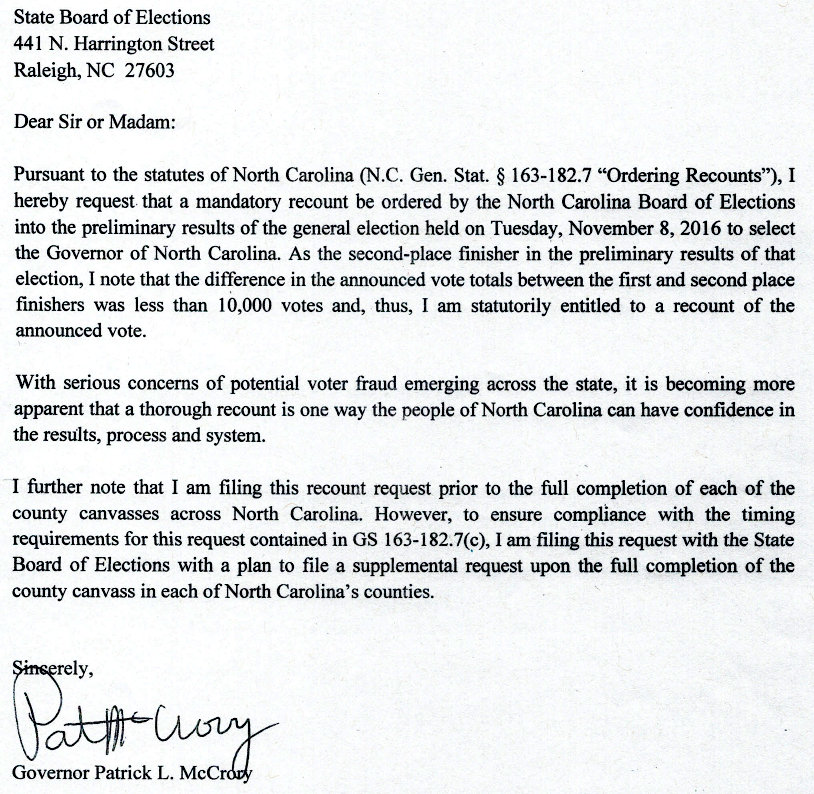
January 3 Update: House Rules And Hawaii Innovation Waiver
ACA-Related House Rules Provisions
Today, January 3, 2017, the 115th Congress convenes for its first session. One of the House of Representatives’ first orders of business will be to adopt its governing rules. As is customary, it will basically adopt the rules that have governed the previous Congress. A number of amendments have been proposed by the Republican leadership, however, several of which are directly relevant to the Affordable Care Act.
One provision, for example, continues the authorization of the House v. Burwell lawsuit in which the House is claiming that the administration is funding the ACA’s cost-sharing reduction payments without an appropriation. Another would stipulate that the ACA’s provision requiring Congress to act on the recommendations of the Independent Payment Advisory Board and limiting the ability of Congress to repeal those provisions do not apply for the 115th Congress.
A number of the rule amendments are directed toward reducing entitlement spending. One provision in particular is aimed directly at the ACA. This provision states that in general it is not in order for the House to consider any bill, joint resolution, amendment, or conference report that the Congressional Budget Office scores as causing a net increase in direct spending in excess of $5 billion during any of the four consecutive 10-year fiscal periods following the current 10-fiscal year window. The amendment further provides, however, that this limitation does not apply to bills repealing or reforming the ACA.
The most recent CBO report on the cost of repealing the ACA estimated that repeal would increase the deficit by about 1 percent of gross domestic product in the 2026 to 2035 period. If Congress, as has been predicted, uses the budget reconciliation process to repeal the individual and employer mandates, the premium tax credit and cost-sharing reduction payments, and the Medicaid expansions, as well as the taxes that the ACA imposed on high-income individuals and health insurers and providers, but leaves the ACA’s Medicare cuts in place, the CBO would likely score the measure as reducing the deficit. A problem may arise, however, if Congress adopts money-saving repeal provisions up front, reducing spending, but then tries later to adopt replacement provisions, increasing spending. Under those circumstances, the rule change may come in very handy.
Hawai’i Innovation Waiver
On December 30, 2016, HHS approved an Affordable Care Act 1332 innovation waiver application for the state of Hawai’i. (fact sheet) Section 1332 allows HHS and the Department of the Treasury to waive certain ACA requirements for states that propose alternative approaches that allow them to provide at least as affordable and comprehensive coverage as that provided by the ACA to at least a comparable number of people without increasing the federal budget deficit.
The Hawai’i waiver will free it from the small employer SHOP provisions of the ACA. The state will be able to use the funds that would have been available for small employer tax credits to help fund grants to small businesses under a state program established under Hawai’i’s preexisting Prepaid Health Care Act. Hawai’i will get $459,199 in 2017 under the waiver and $2.8 million over the 2017 to 2021 period for which the waiver is approved. This is likely to be the only waiver granted by the Obama administration, and possibly the last 1332 waiver ever granted if the ACA is repealed.
Original Post
Yesterday, January 1, 2017, several Affordable Care Act (ACA) rules were scheduled to go into effect. On December 31, however, a judge granted a preliminary injunction blocking parts of a nondiscrimination rule issued under ACA section 1557. On December 30, another judge refused to block a rule allowing employers to offer significant incentives for employees to disclose medical information in connection with workplace wellness programs.
Judge Blocks Enforcement Of Ban On Discrimination Based On Gender Identity Or Pregnancy Termination
On December 31, 2016, Judge Reed O’Connor of the United States District Court for the Northern District of Texas entered a nationwide injunction in Franciscan Alliance v. Burwell. The order prohibited the Department of Health and Human Services (HHS) from enforcing its nondiscrimination rule promulgated under ACA section 1557 insofar as the rule prohibits discrimination on the basis of gender identity or termination of pregnancy. The remaining provisions of the rule—prohibiting discrimination on the basis of disability, race, color, age, national origin, or sex other than gender identity—will take effect as scheduled, mostly on January 1, 2017.
Legal Background
Section 1557 applies various antidiscrimination laws to entities receiving assistance under, administering, or established by, the ACA. The antidiscrimination provisions incorporated into section 1557 include Title IX of the Education Amendments of 1972, which prohibits discrimination based on sex. In accordance with earlier interpretations of sex discrimination law, the HHS regulations prohibit discrimination based on sexual stereotyping, including discrimination based on gender identity.
This case challenging the rule was filed in August by the Franciscan Alliance (a Catholic hospital system), a Catholic medical group, a Christian medical association, and five states. (Three more states joined in an amended complaint.)
The plaintiffs alleged that the section 1557 regulations forced the plaintiff professionals and facilities to provide gender transition services against their medical judgment and religious beliefs. They also asserted that the regulations prohibited discrimination on the basis of “termination of pregnancy” and failed to provide an exclusion for abortions, thus requiring coverage of abortions. The state plaintiffs alleged that the regulation required them to cover gender transition services and interfered with their “zealous” protection of the physician-patient relationship.
The plaintiffs’ amended complaint, filed in October, alleged that the regulation violated the federal Administrative Procedures Act; constitutional and statutory provisions protecting religious liberty, freedom of expression and association; and the rights of the plaintiff states guaranteed by Constitution’s spending clause and Tenth and Eleventh Amendments.
In September 2016, the American Civil Liberties Union of Texas and the River City Gender Alliance asked the court to allow them to intervene as defendants in the case. Judge O’Connor stayed a ruling on the motion to intervene pending his decision on the motion for a preliminary injunction.
A preliminary injunction is an extraordinary remedy because it grants relief to the plaintiff before the court has an opportunity to fully explore the factual and legal basis of a case. A court can only grant a preliminary injunction if the plaintiff shows a substantial threat of irreparable injury, a substantial likelihood of success on the merits of the case, that the threatened injury to the plaintiff outweighs the threatened harm to the defendant, and that the granting of the injunction is not contrary to the public interest.
The plaintiffs argued that they faced enforcement actions under the rule that would cause them irreparable injury and that the rule misinterpreted the Title IX prohibition against sex discrimination, which, they argued, only prohibits sex discrimination based on a binary understanding of gender. The private plaintiffs also argued that the section 1557 rule did not adequately accommodate their religious beliefs and that the Religious Freedom Restoration Act precluded its application to them.
The Court’s Opinion
Judge O’Connor ruled in favor of the plaintiffs based on statutory grounds and did not reach the plaintiff’s constitutional arguments. He began by disposing of the government’s jurisdictional objections; he found that the rule would require the plaintiffs to change their current policies, refusing to offer or pay for abortions or gender transition surgery, under the threat of enforcement actions, and thus the plaintiffs faced sufficient injury to support standing. The judge also held that the case was ripe for adjudication because the plaintiffs would have to intentionally defy the law, risking serious financial or civil penalties, or forgo conduct that they believed was constitutionally protected. Moreover, the plaintiffs should not, the court concluded, have to defend administrative enforcement actions to defend their rights but could instead directly challenge the regulation.
Plaintiffs’ Likelihood Of Success
Judge O’Connor then turned to the question of the plaintiffs’ likelihood of success on the merits. The government had argued that the court should defer to its interpretation of section 1557 because of the Chevron doctrine, which requires courts to defer to administrative agencies in their interpretation of the law when a statute is ambiguous, an agency is tasked with interpreting the law, and the agency’s interpretation of the law is permissible.
But Chevron deference does not apply if the court finds that a statute is unambiguous, in which case the court must apply the terms of the statute. Judge O’Connor had no trouble finding that section 1557 unambiguously prohibits only biological sex discrimination. The term “sex” as used in Title IX, on which section 1557 is based, “unambiguously refers to the biological and anatomical differences between male and female . . . as determined at . . . birth,” the court wrote. This was the meaning of sex at the time Title IX was adopted, and this was the meaning that Congress meant to incorporate under ACA section 1557. Thus, transgender is not a protected characteristic under the statute, and the implementing rule therefore “exceeds the grounds incorporated by section 1557.”
Judge O’Connor further held that the section 1557 rule was arbitrary, capricious, and contrary to the law under the APA. The rule failed to incorporate Title IX’s exemption for religious entities in situations where the application of Title IX’s prohibitions would be inconsistent with 1) the religious tenets of the organization, or 2) Title IX’s proviso that it should not be construed to require payment for or provision of abortions. HHS had argued that the religious and abortion exemptions were specific to the educational institutions covered by Title IX and should not be incorporated into section 1557, but the court held that section 1557 unambiguously incorporated all provisions of Title IX, including these exemptions.
Judge O’Connor next held that the Religious Freedom Restoration Act prohibited the application of the rule’s provisions on abortion and gender transition to the non-state plaintiffs because the provisions substantially burdened the plaintiff’s exercise of religion and were not the least restrictive means of advancing a protected interest. The section 1557 rule, it should be noted, expressly disavows any application of the rule that would violate RFRA.
Judge O’Connor proceeded to find that the remaining requirements for a preliminary injunction were met: the state plaintiffs were suffering irreparable harm because the rule prevented them from giving paramount consideration to the independent medical judgment of physicians, and the potential harm faced by the plaintiffs outweighed any potential harm to HHS from a delay in enforcing the rule. The decision completely ignores the claims of the interveners, who represented transgender individuals who claimed they would be harmed by a failure to enforce the rule.
Finally, the court entered a nationwide injunction against the enforcement of the rule’s prohibition against discrimination on the basis of gender identity or termination of pregnancy. Judge O’Connor concluded that a nationwide injunction is appropriate in an Administrative Procedure Act challenge and that the plaintiff Christian Medical and Dental Society has members throughout the country.
Some Thoughts On Judge O’Connor’s Opinion
I am not an expert on Title IX, and will leave it to others to comment on Judge O’Connor’s understanding of it, which is at the heart of his opinion. I do, however, find troubling his understanding of the 1557 nondiscrimination rule
He is correct that the rule does not permit insurers or others offering health coverage to “have or implement a categorical coverage exclusion or limitation for all health services related to gender transition;” deny or limit coverage to a transgender individual because those services are ordinarily or exclusively available to individuals different gender from that of the transgender individual at birth; or otherwise discriminate against transgender individuals. Judge O’Connor found this part of the rule to not be supported by Title IX’s definition of sex discrimination as it is incorporated into section 1557 and enjoined it.
But Judge O’Connor is simply wrong in believing that section 1557 requires anyone to pay for or perform abortions. The rule does define sex discrimination to include discrimination on the basis of “termination of pregnancy,” presumably addressing situations where a woman is denied treatment because she had earlier had an abortion, but the preamble is quite clear that the rule is not intended to displace existing federal conscience protection laws (including RFRA), ACA provisions that reject an abortion coverage mandate, or state laws governing abortion.
Moreover, nothing in the section 1557 rule specifically requires practitioners or health care facilities to provide gender transition services.
The rule provides:
A covered entity shall provide individuals equal access to its health programs or activities without discrimination on the basis of sex; and a covered entity shall treat individuals consistent with their gender identity, except that a covered entity may not deny or limit health services that are ordinarily or exclusively available to individuals of one sex, to a transgender individual based on the fact that the individual’s sex assigned at birth, gender identity, or gender otherwise recorded is different from the one to which such health services are ordinarily or exclusively available.
In explaining this provision, the preface states: “For example, a covered entity may not deny, based on an individual’s identification as a transgender male, treatment for ovarian cancer where the treatment is medically indicated,” and, “Nothing in the rule would, for example, require a covered entity to provide a traditional prostate exam to an individual who does not have a prostate, regardless of that individual’s gender identity.”
The rule does not impose on health care professionals an obligation to provide gender transition services, as it does require insurers to cover such services. Indeed, the rule does not require medical professionals to provide care contrary to their medical judgment. The preface explicitly notes that medical reasons may justify distinctions that could otherwise be discriminatory. The rule also specifically provides, “Insofar as the application of any requirement under this part would violate applicable Federal statutory protections for religious freedom and conscience, such application shall not be required.”
Of course, if a practitioner or institution refused care to a transgender individual based on that person’s gender identity, it might be necessary to offer a justification, but that is always true when it is necessary to justify conduct that is otherwise prima facie discriminatory. RFRA does not invalidate all laws that might infringe on anyone’s religious beliefs; it rather requires regulations to accommodate those beliefs.
It is troubling that this litigation has been promoted based on false statements about the requirements of section 1557, which Judge O’Connor has to a certain extent uncritically accepted. A group supporting the litigation claims at its website that the 1557 federal regulation “requires doctors to perform gender transition procedures on children, even if the doctor believes the treatment could harm the child.” This is simply not true. Indeed, in the preface to the rule HHS rejected a suggestion that it declare rules prohibiting coverage of gender transition surgery for persons under age 18 as per se discriminatory.
One of the first legal decisions for the Trump administration will be whether to appeal Judge O’Connor’s ruling. Of course, if the Affordable Care Act is repealed as threatened, the decision may become moot.
Judge Rejects Argument That Wellness Program Incentives Amount To Coercion
The second case, decided on December 30, 2016, involved the Equal Employment Opportunity Commission’s wellness program rule, also scheduled to go into effect yesterday.
Legal Background
The Americans with Disabilities Act (ADA) prohibits employers from requiring employees to submit to medical examinations and from inquiring whether an employee has a disability unless the examination or inquiry is job-related and “consistent with business necessity.” Similarly, the Genetic Information Nondiscrimination Act (GINA) prohibits employers from collecting genetic information (including information on the manifestation of a disease or disorder) regarding employees or employees’ family members. As to both the ACA and GINA, an exception exists for the collection of medical information in connection with an employee health program as long as the employee’s provision of the information is “voluntary.”
Under the Health Insurance Portability and Accountability Act (HIPAA) and, later, the Affordable Care Act (ACA), employers can offer their employees “wellness” programs, which often involve collecting medical information. Under HIPAA, employers could offer employees incentives contingent on participating in some health related program or achieving some health-related goal (or penalties for not participating) up to the 20 percent of the cost of coverage. The ACA increased the amount of rewards or penalties to 30 percent.
Beginning in 2000, however, the Equal Employment Opportunity Commission (EEOC) which enforces the ADA and GINA, took the position that employers could not penalize employees at all for failing to provide health information to wellness programs. In 2010 it took the same position with respect to family medical information under GINA. As more permissive wellness program regulations were issued by HHS, Treasury, and Labor under HIPAA and the ACA, the EEOC waffled some in its position, although in 2014 it took several enforcement actions against employers who penalized employees for not providing health information.
In May of 2016, the EEOC promulgated new regulations aligned more closely with the ACA and HIPAA regulations. The 2016 regulations permitted penalties or incentives of up to 30 percent of the cost of self-only coverage, concluding that penalties and rewards of this magnitude did not render involuntary a wellness program that sought disclosure of ADA-protected information on an employee or GINA-protected medical information on a spouse (but not other family members) as part of a health risk assessment. The regulations were to take effect for plan years beginning on or after January 1, 2017.
In October of 2016, AARP filed a lawsuit on behalf of its members asserting that the EEOC’s new interpretation of “voluntary” is inconsistent with both the ADA and GINA because incentives or penalties of up to 30 percent are, in fact, coercive. Moreover, the AARP claimed, the EEOC’s change of position in its interpretation of “voluntary” in its 2016 rule—from its 2000 ADA guidance and 2010 GINA rule—are inadequately explained and inconsistent with the administrative record. The AARP moved for a preliminary injunction to block the rule from going into effect on January 1, 2017, while the lawsuit remained pending.
The Court’s Opinion
On December 29, 2016, Judge John Bates of the federal district court for the District of Columbia denied AARP’s request for a preliminary injunction. A considerable part of the opinion deals with whether the AARP has standing to bring the lawsuit. Judge Bates ultimately concluded that the AARP is a membership organization (a fact that will come as no surprise to 38 million Americans over age 50) and that at least one of its members (based on affidavits submitted by the AARP) would potentially be injured by the rule.
The court then proceeded to explore whether the requirements for a preliminary injunction were met—threatened irreparable injury, likelihood of success on the merits, the balance of the hardships favoring the petitioner, and the effect of an injunction of the public interest. The judge concluded that information privacy interests are in fact important, but that the threat to these interests in the case was not irreparable. The AARP members could pay higher premiums while the case was pending, and if they prevailed in the end they could recover the money they had paid.
The court also noted that the health information had to be kept in a separate record and could be used only for limited purposes and not for discrimination. Judge Bates was critical of AARP having delayed several months in bringing the lawsuit, suggesting that the threatened injury was not that severe.
Judge Bates next concluded that the EEOC’s interpretation of the term “voluntary” appeared not to be irrational and its change in position in its 2016 rule adequately explained. AARP had not shown, therefore, that it was likely to prevail on the merits. The court also found that the disruption that enjoining the rule would cause to employers and insurers outweighed the potential injury to the plaintiffs.
The court’s judgment may be one of the last involving the Obama administration’s defense of one of its ACA-related rules. It is ironic, therefore, that the case involves a victory for the administration against consumers, rather than against opponents of the ACA.




































